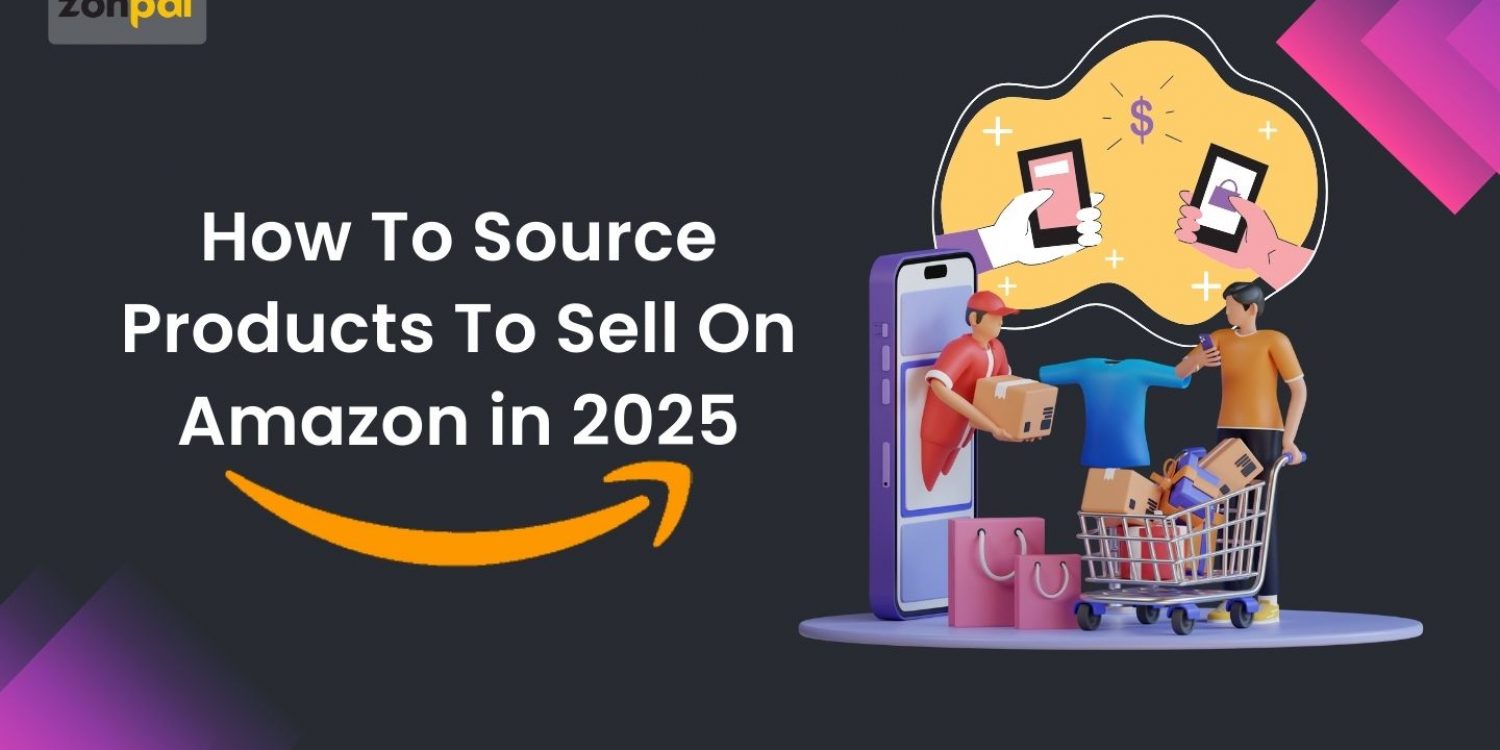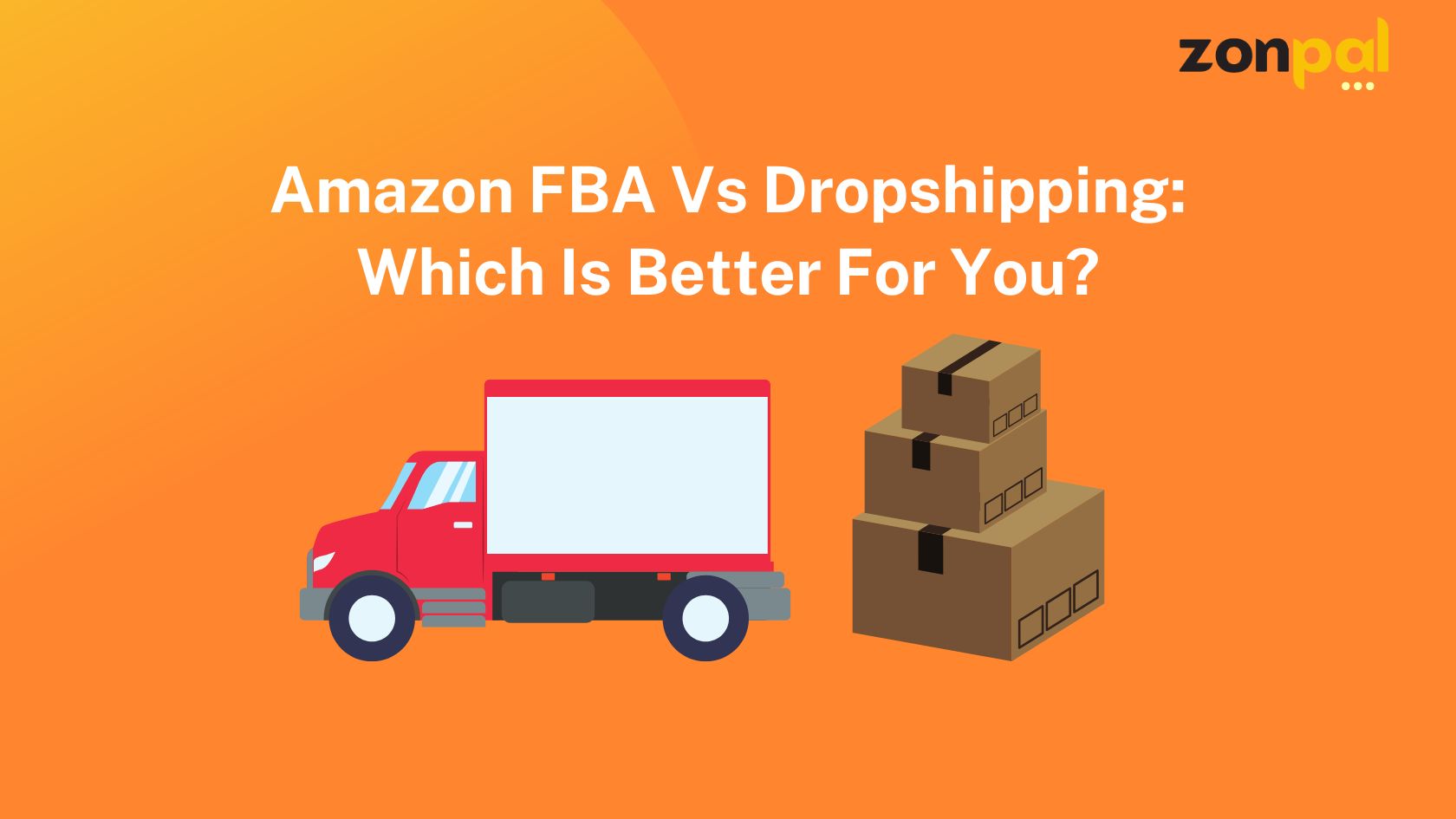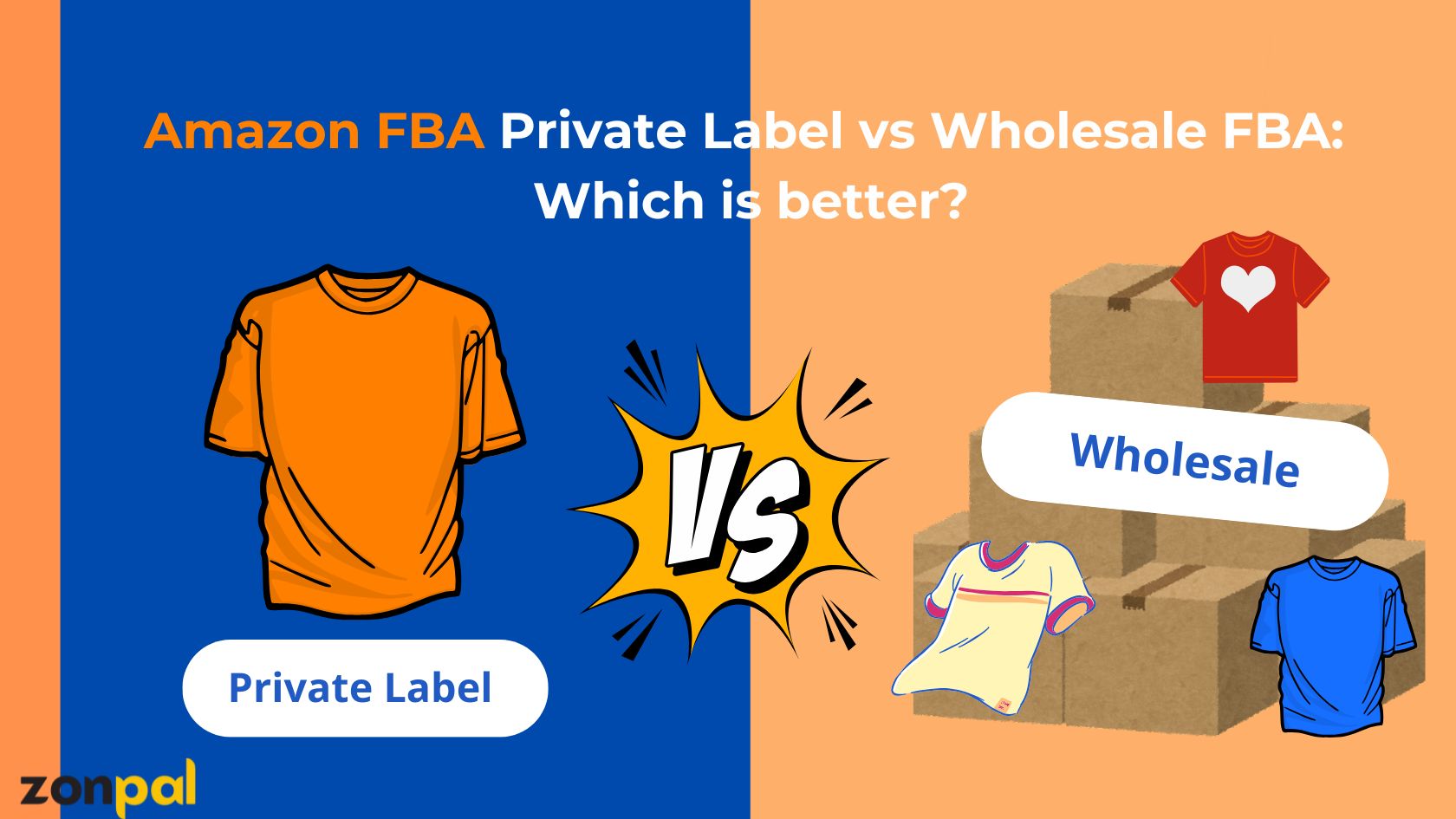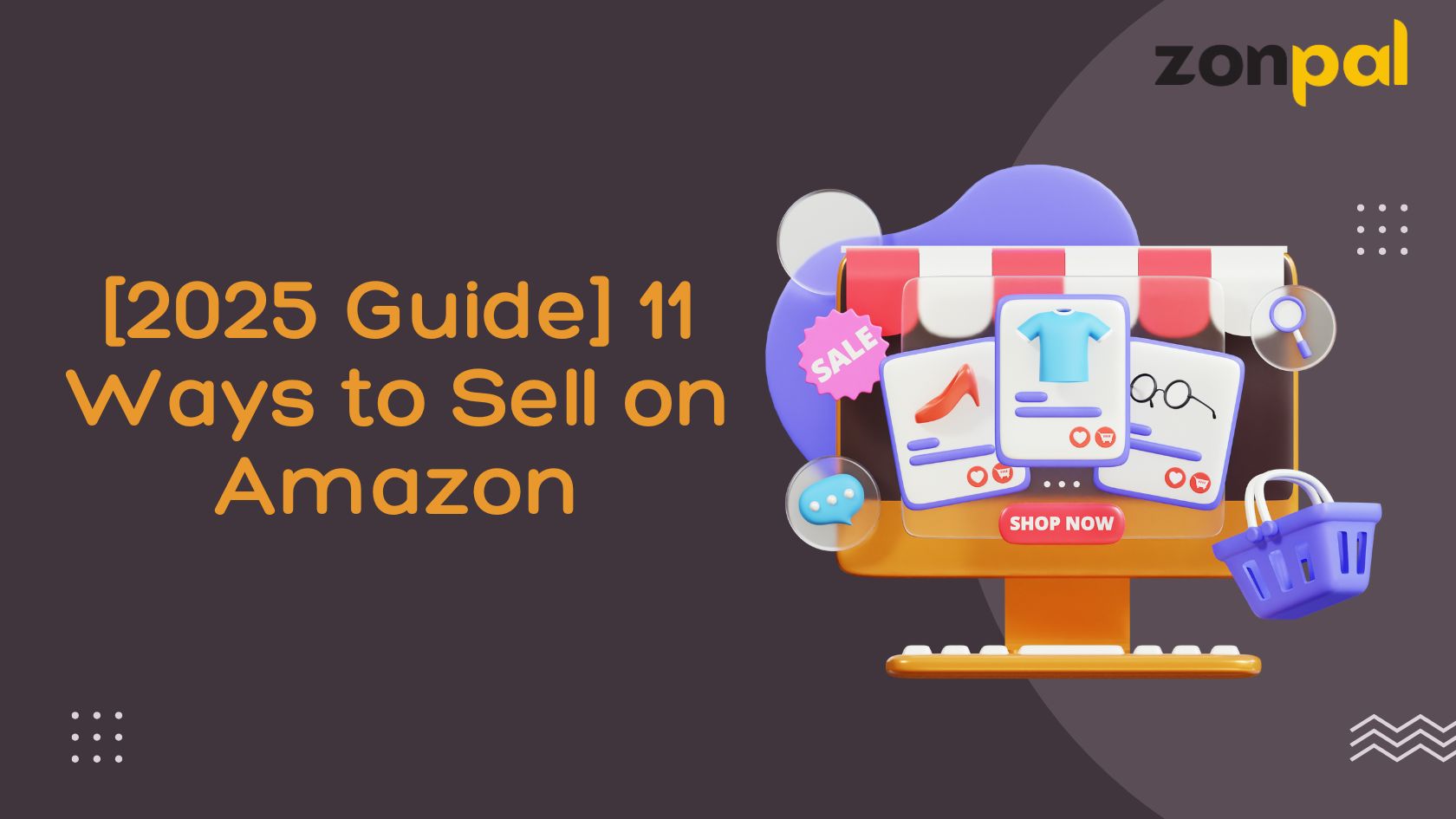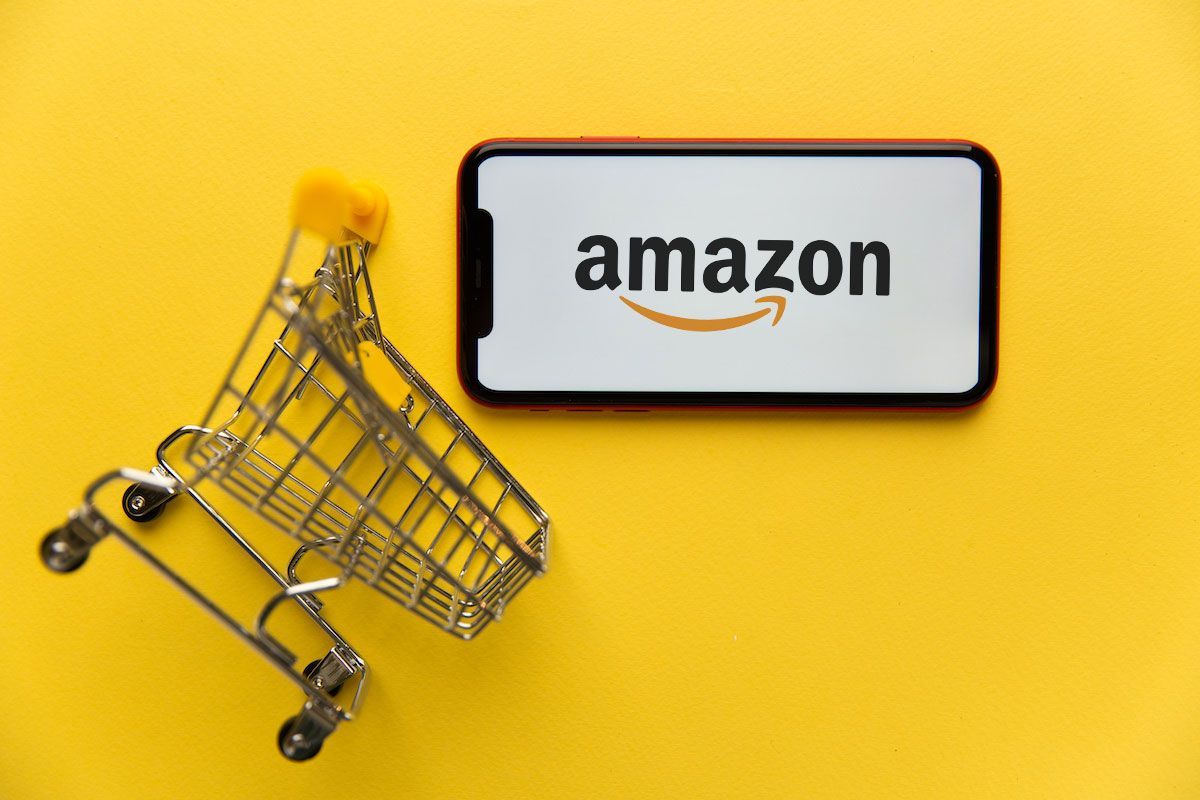[2025 Guide] How To Source Products To Sell On Amazon
Selling on Amazon in 2025 is still one of the most accessible and rewarding ways to build an online business but only if you start with the right product. The truth is, many new sellers struggle not because they can’t market well, but because they source the wrong items. This guide is here to help you get it right from the beginning. We’ll walk you through how to choose, evaluate, and source products that actually sell and how to find reliable suppliers to bring them to life.
Key Considerations Before Sourcing
Before diving into product sourcing for Amazon, it’s essential to lay a strong foundation. Sourcing is not just about finding products. It is also about matching your choices with your business goals, market trends, and Amazon’s special system. Here are the key considerations to keep in mind:
- Understand Amazon’s rules and fees: Amazon FBA (Fulfilment by Amazon) charges fees for storage, fulfilment, and referrals. Familiarize yourself with these costs to avoid surprises. For example, oversized or heavy products may incur higher fees, eating into your margins.
- Define your business model: Are you aiming for quick profits through arbitrage, or are you building a long-term private label brand? Your sourcing strategy will differ based on your goals.
- Assess your budget and risk tolerance: Sourcing methods like wholesale or private labelling require upfront investment, while arbitrage and dropshipping are less capital-intensive. Be honest about how much you’re willing to risk, especially in the early stages.
- Stay updated on trends: Consumer preferences shift rapidly. Tools like Google Trends, Amazon’s Best Sellers Rank (BSR), and social media platforms like TikTok can reveal emerging product categories. For instance, eco-friendly products and smart home devices are projected to see strong demand in 2025, based on recent market reports.
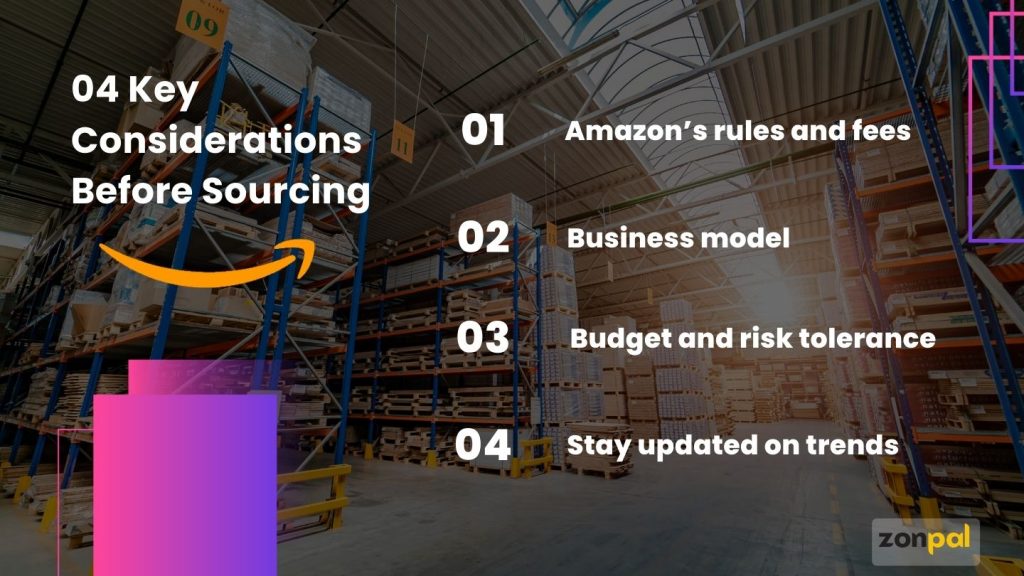
4 key considerations before sourcing
Addressing these considerations will help you approach sourcing with clarity and confidence. Too many sellers jump in blindly, only to face inventory issues or slim margins. Take the time to plan; this is where the real work begins.
>>> Read more: How Trump’s Tariffs Hit Hard? What Amazon Sellers Need to Know <<<
Step-by-Step Guide to Sourcing Products
Sourcing products for Amazon FBA is a systematic process that requires research, evaluation, and execution. Below is a detailed, step-by-step guide to help you find profitable products and reliable suppliers.
Step 1: Research High-Demand, Low-Competition Products
The foundation of successful sourcing is identifying products that balance demand, profitability, and competition. High-demand products with low competition are the holy grail of Amazon selling, but finding them requires diligence.
- Use Data-Driven Tools:
Tools like Jungle Scout, Helium 10, or AMZScout are indispensable for analyzing Amazon’s marketplace. These tools provide insights into sales volume, competition, and profit margins. For example, Jungle Scout’s Product Tracker lets you monitor real-time sales data for specific niches.
- Analyze Customer Reviews:
Reviews reveal what customers love or hate about existing products. Look for products with 50-200 reviews and an average rating of 3.5-4 stars. These products often have demand but aren’t oversaturated.
We once sourced a kitchen gadget for a client whose previous version had received 75 reviews, with durability being the most common complaint. By identifying a higher-quality alternative, we helped them capture a valuable, underserved segment of the market.
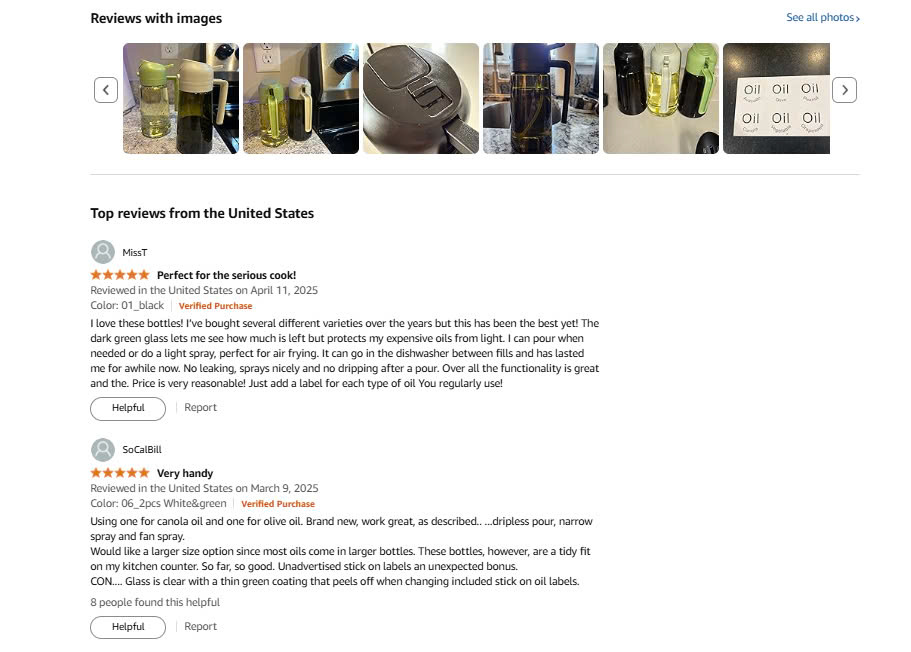
Analyze customer reviews on Amazon
- Focus on Profit Margins:
Aim for products with a 25-50% profit margin after accounting for all costs (product, shipping, Amazon fees). Avoid products priced below $15, as they often yield slim profits. A 2024 StartupBros article said that products priced between $20 and $70 usually have the best mix of demand and profit.
Step 2: Explore Different Sourcing Methods
Once you’ve identified potential products, it’s time to source them. There are several sourcing methods, each with its own advantages and challenges. Here’s a breakdown:
- Retail Arbitrage:
This involves buying discounted products from local stores (e.g., Walmart, Target) or clearance sales and reselling them on Amazon at a markup. It’s low-risk and ideal for beginners.
- Online Arbitrage:
Similar to retail arbitrage, but you source products from e-commerce platforms like ebay.com, Walmart.com, or AliExpress. Tools like Tactical Arbitrage can automate the process by scanning websites for price discrepancies. You can use online arbitrage to source limited-edition collectables, but it requires constant monitoring to stay profitable.
- Wholesale:
Purchase products in bulk from distributors or brands at a lower per-unit cost. This method suits sellers with more capital and a focus on consistent inventory. Platforms like Faire can connect you with suppliers.
- Private Label:
Create your own brand by sourcing generic products from manufacturers (often via Alibaba) and customizing them with your logo or packaging. This method offers high scalability but requires significant upfront investment.
- Dropshipping:
You can partner with suppliers that offer direct shipping to customers. While this approach reduces upfront risk, dropshipping on Amazon is challenging due to strict rules. For instance, you must appear as the seller of record. We always advise caution, as even minor violations can result in account suspension.
Each method has its place, but your choice depends on your goals and resources. Beginners might start with arbitrage to learn the ropes, while experienced sellers often transition to private labeling for long-term growth.
Step 3: Find Reliable Suppliers
Where to source products to sell on Amazon? Reliable suppliers are the backbone of your Amazon business. A single bad supplier can lead to delayed shipments, poor-quality products, or lost customers. Here’s how to find and vet suppliers:
- Leverage online platforms:
Alibaba and AliExpress are go-to platforms for global suppliers, offering a wide range of products. ThomasNet is excellent for U.S.-based manufacturers, especially for wholesale or private label sourcing.
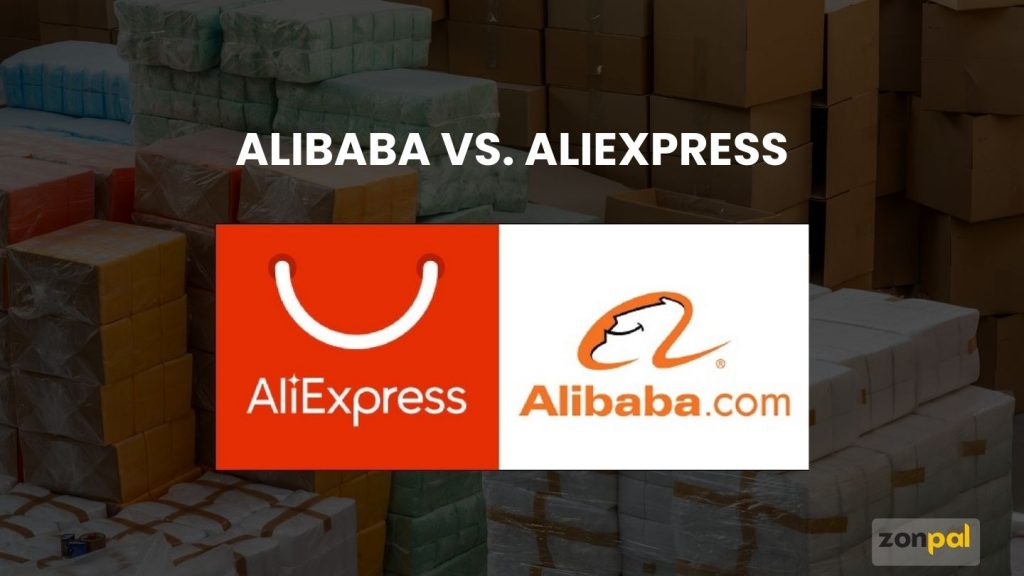
Alibaba and AliExpress are go-to platforms for global suppliers
- Attend trade shows and markets:
Trade shows like the Canton Fair (China) or ASD Market Week (U.S.) allow you to meet suppliers in person, negotiate deals, and inspect product quality. There are many trade shows invaluable for building trust with suppliers, as face-to-face interactions reveal their professionalism.
- Vet suppliers thoroughly:
Always request product samples to assess quality. Check supplier reviews on platforms like Alibaba, verify their business licenses, and confirm their production capacity.
Step 4: Evaluate Product Viability
Before committing to a product, evaluate its viability to ensure profitability and compliance with Amazon’s standards.
- Calculate total costs:
Factor in product costs, shipping, Amazon FBA fees, and marketing expenses. Use Amazon’s FBA Revenue Calculator to estimate your margins. For example, if a product costs $5 to source, $3 to ship, and incurs $4 in Amazon fees, you’ll need to sell it for at least $15 to achieve a 30% margin.
- Test small batches:
Order 50-100 units initially to gauge demand and quality. For example, one of our clients tested a small batch of yoga mats and found that while customers loved the design, they complained about slipperiness. The client then improved the product before scaling up.
- Ensure compliance:
Amazon has strict requirements for product quality, packaging, and labelling. For instance, products must have a barcode, and some certain categories (e.g., toys, cosmetics) require safety certifications. Non-compliance can lead to account suspension.
Tips to Navigate Challenges in Product Sourcing
Sourcing isn’t without its challenges, but proactive strategies can help you overcome them:
- Avoid oversaturated niches: Use tools like Helium 10 or Jungle Scout to evaluate market saturation. For instance, steer clear of generic products like phone chargers—unless you can offer a clear and compelling point of differentiation.
- Mitigate supply chain risks: Global disruptions, like the 2021 shipping crisis, can delay inventory and hurt sales. To reduce risk, work with multiple suppliers in different regions. For critical products, it’s highly recommended to maintain at least two reliable sources.
- Negotiate with suppliers: Don’t accept the first quote. Politely negotiate for better pricing or faster shipping.
- Stay compliant with Amazon policies: Regularly review Amazon’s seller guidelines, as they evolve. For example, Amazon tightened its dropshipping rules in 2023, impacting many sellers who didn’t adapt.
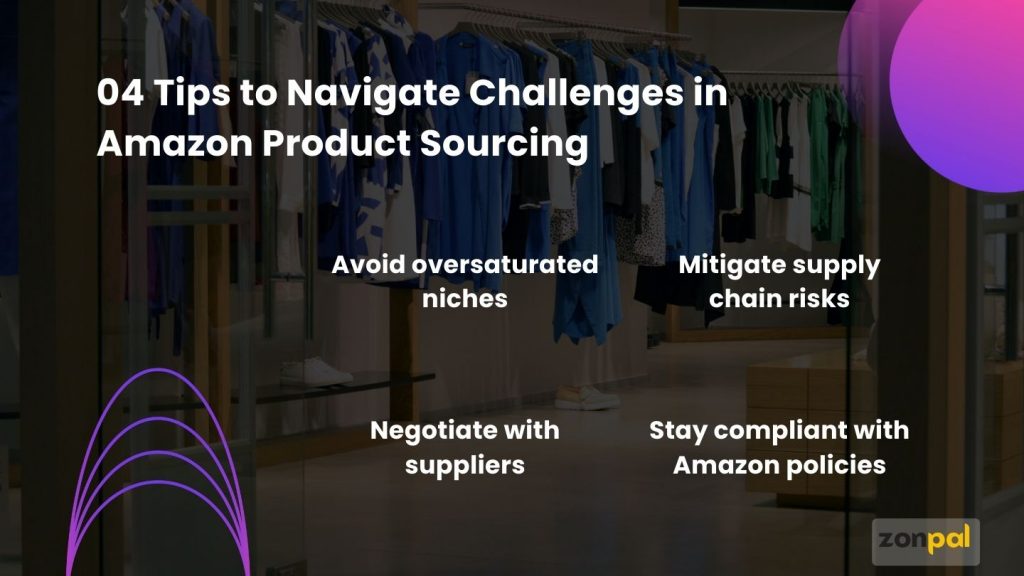
04 tips to navigate challenges in product sourcing
By anticipating these challenges, you’ll be better equipped to build a resilient sourcing strategy.
Ways to Scale Your Sourcing Strategy
Once you’ve mastered the basics, scaling your sourcing strategy can take your Amazon business to new heights. Here are two key approaches:
Build Long-Term Supplier Relationships
Long-term supplier partnerships lead to better pricing, priority production, and exclusive deals. Start by communicating clearly, providing detailed product specifications and timelines to prevent errors that could disrupt your inventory. Consistent communication builds trust and reduces the risk of costly mistakes.
Show loyalty to your suppliers through repeat orders or early invoice payments. This encourages them to prioritize your business, potentially offering discounts or faster production. If possible, visit suppliers in person or arrange virtual meetings to foster stronger connections and demonstrate commitment.
Diversify Product Lines
Expanding your product catalogue minimizes reliance on a single item and stabilizes revenue. If you sell yoga mats, consider adding complementary products like resistance bands or meditation cushions to appeal to the same customers. Leverage Amazon’s “Frequently Bought Together” feature to identify items that boost average order value.
Test new niches carefully by allocating 10-20% of your budget to small batches. This lets you gauge demand without overcommitting resources. Monitor sales data closely to decide which products to scale. To maintain efficiency, use inventory management tools like RestockPro to automate demand forecasting and prevent stockouts or overstocking, ensuring consistent sales.

Ways to scale your sourcing strategy
Conclusion
Sourcing products to sell on Amazon is both an art and a science. To build a profitable business, find high-demand products with low competition, and partner with reliable suppliers. While challenges like competition and supply chain disruptions are inevitable, strategic supplier relationships and a diversified product line can help you thrive.
Whether you’re sourcing private label items or flipping clearance goods, stay curious, test your ideas, and carve your own path. With millions of products on Amazon, those who source smartly will rise to the top. Start small, learn quickly, and let 2025 be the year your Amazon business takes off.
If you’re unsure where to start, Zonpal’s Product Sourcing service can help. We connect you with vetted suppliers and identify profitable products tailored to your goals, saving time and reducing risks.

